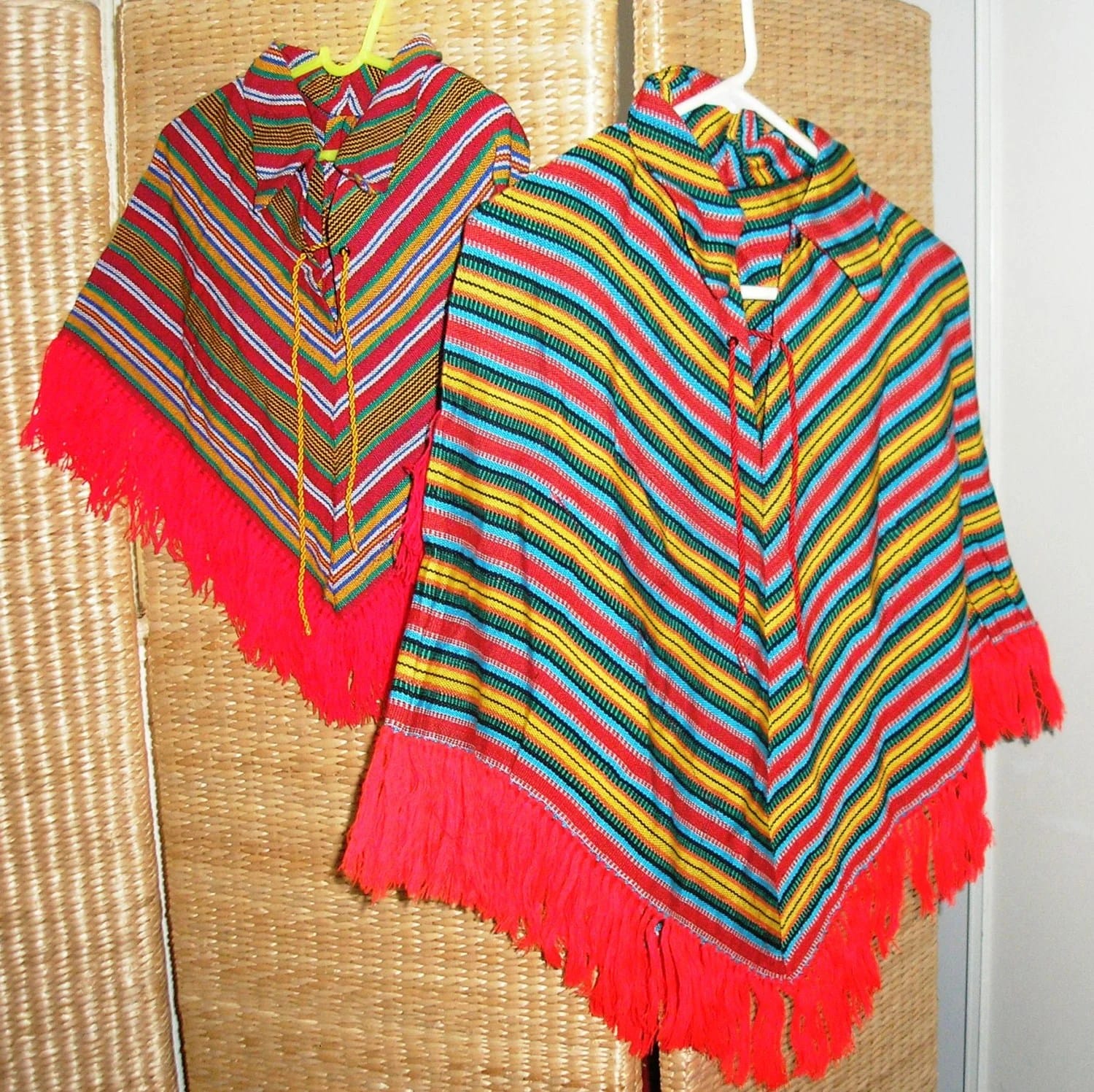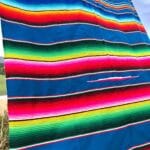Picture yourself wrapped in a cozy, colorful blanket, but way more stylish. That’s the serape! It’s a versatile and timeless piece that takes you on a journey through centuries and cultures. From the vibrant streets of Mexico to the rugged highlands of Scotland, the serape’s adaptable charm and enduring style have captivated people for generations. This guide unravels the fascinating story of the serape, exploring its rich history, diverse uses, and how you can incorporate this unique piece into your own wardrobe and home.
Unveiling the Serape: More Than Just a Blanket
Serapes are those vibrant, cozy blankets you might picture draped over a chair in a southwestern home, or perhaps glimpsed in a classic Western film. But their story goes far beyond mere aesthetics. Their journey, from the heart of Mexico to the highlands of Scotland, speaks to their enduring appeal and adaptability. What is a serape in English?
A Tale of Two Cultures: Tracing the Serape’s Roots
The serape’s story begins in pre-Colonial Mexico, where skilled artisans crafted these blankets with intricate patterns and vivid colors, reflecting the rich cultural heritage of the region. These early serapes likely held symbolic meaning, representing community and identity. During the colonial era, their popularity spread northward, influencing artisans in what is now the Southwestern United States and Northern Mexico. Remarkably, the serape’s journey extended across the Atlantic to Scotland, where it was reinterpreted with a distinct Scottish flair. Imagine the vibrant hues of a traditional Mexican serape juxtaposed with classic tartan patterns—a true fusion of cultures!
From Simple Wool to Luxurious Mohair: Exploring Materials and Construction
Originally, Mexican serapes were primarily woven from wool, often showcasing bold stripes and geometric designs. The labor-intensive process demonstrated the weavers’ skill and artistry. These traditional techniques are still practiced today, preserving this rich craft. Scottish adaptations, however, often incorporate the soft textures of lambswool and merino lambswool, reflecting Scotland’s renowned textile traditions. Modern serapes offer even greater variety, with materials ranging from warm alpaca and mohair to easy-care synthetic fibers. This array of options suggests a perfect serape exists for every preference and budget.
The Many Faces of the Serape: A Versatile Wonder
The serape is far more than just a blanket. Today, they come in a dazzling array of styles and sizes, from the classic fringed Mexican serape with vibrant stripes to elegant Scottish versions adorned with tartan. Some are designed as cozy throws for chilly evenings, while others are lightweight shawls or wraps. Their versatility extends to home décor, where they serve as wall hangings, table runners, or even upholstery accents. What are serapes used for?
Finding Your Perfect Serape: Where to Begin
Ready to add a serape to your collection? Whether you prefer the traditional Mexican style or the Scottish twist, numerous options exist. For authentic Mexican serapes, exploring online marketplaces or visiting local artisan shops can uncover unique treasures. If a Scottish serape appeals to you, researching reputable Scottish textile companies is a good starting point. Many retailers offer curated selections, from classic designs to contemporary interpretations. Exploring vintage shops or antique markets might also yield a one-of-a-kind piece.
Styling Your Serape: Tips and Tricks
Once you’ve found your perfect serape, the styling possibilities are endless. Drape it over your shoulders for bohemian flair, wrap it around your waist as a stylish belt, or use it as a shawl to add a pop of color. Tie it around your neck for a cozy scarf, or, for men, add a rugged yet refined touch to a casual look. Experiment with draping techniques, knots, and placements to discover what works best for you, both in your wardrobe and home décor.
The Ever-Evolving Serape: Beyond the Basics
While traditional crafting methods remain valued, contemporary designers constantly explore new materials, patterns, and uses for this versatile textile. This ongoing evolution suggests the serape, with its rich history and cross-cultural influences, will probably remain a cherished and adaptable piece for generations to come. Whether drawn to its history, versatility, or beauty, the serape offers a unique way to express personal style and connect with a rich cultural heritage.
Poncho vs. Serape: Unraveling the Differences
While both ponchos and serapes are generally rectangular wraps with roots in Latin America, they possess distinct histories and purposes. This section clarifies the key differences.
Spotting the Differences: A Closer Look
The most obvious distinction is the head opening. A poncho always has a central hole for the head, like a sleeveless shirt. A serape, traditionally, is a long rectangle without an opening, wrapped around the body like a shawl. Ponchos prioritized practical protection from the elements, while serapes often served as artistic expressions, symbols of cultural pride and craftsmanship, especially in Mexican heritage.
| Feature | Poncho | Serape |
|---|---|---|
| Head Opening | Yes | Traditionally No |
| Primary Purpose | Practical, protection from elements | Artistic expression, cultural identity, versatile use |
| Materials | Varied, often weather-resistant | Woven textiles, often with complex patterns |
| Length | Generally shorter | Traditionally longer, often knee-length |
The Jorongo: A Blend of Two Worlds
The jorongo further complicates the distinction. This garment is essentially a poncho made from serape fabric, combining practicality with artistic design.
Modern Fashion: Blurring the Lines
Today, the lines between ponchos and serapes are increasingly blurred. Garments labeled “serape” might have a head opening, reflecting evolving fashion trends and the popularity of serape-inspired patterns. Some experts believe “serape” is used more loosely now, sometimes simply denoting a colorful patterned wrap.
Exploring Further: Ongoing Research
The study of textile traditions is ongoing. There is debate among experts regarding the precise origins and classifications of these garments. Further research may illuminate these nuances. It’s important to remember that current knowledge is always subject to change.
A Final Word
Whether you choose a poncho for a rainy day or a serape to add artistry to your outfit, both garments offer a unique connection to Latin American culture. They showcase the rich history and craftsmanship of their regions of origin.
Beyond the Blanket: Unveiling the Versatile Uses of the Serape
Serapes, those brightly colored blankets woven with intricate designs, are much more than just something to keep you warm. Over time, they’ve evolved from a practical item for Mexican peasants to a genuine cultural symbol with a surprising range of uses. What are serapes used for?
Clothing and Fashion
One of the most obvious uses is as clothing. Drape a serape over your shoulders for warmth, or wrap it around yourself for protection from wind and rain. Often paired with traditional Mexican clothing, they also add a pop of color and texture to modern outfits.
Home Décor
Serapes can bring Mexican heritage and vibrant artistry into your home. Drape one over a chair or sofa, hang it on a wall, or use it as a tablecloth. They also make fantastic rugs, bringing warmth and unique style to a room. Smaller pieces can be framed as unique wall art.
Historical and Practical Uses
Historically, serapes served as sleeping mats and horse blankets. This historical versatility speaks to their durability and adaptability.
Accessories and Beyond
Today, the serape’s spirit lives on in various accessories like bags and scarves. Some artisans even create jewelry featuring serape patterns. Consider using a serape as a picnic blanket or repurposing one into cushion covers. The possibilities are endless!
| Use Case Category | Specific Examples |
|---|---|
| Clothing | Shawl, cloak, poncho, fashion accessory |
| Home Décor | Wall hanging, tablecloth, rug, throw blanket, furniture cover, framed art |
| Accessories | Bags, scarves, jewelry, belts |
| Historical Uses | Sleeping mat, horse blanket, saddle blanket |
| Other Potential Uses | Picnic blanket, cushion covers, craft projects |
While these are common uses, ongoing research might reveal even more ways these versatile textiles were utilized. Some experts believe serapes may have played a role in certain ceremonial practices, although more evidence is needed.
The cultural significance of the serape continues to be studied. While often seen as a symbol of Mexican identity, some scholars suggest its origins and symbolism may be more complex. This is an area of ongoing research, and our understanding is likely to evolve.
What is a Serape in English?
A serape is a traditional Mexican shawl or cloak, often brightly colored and fringed, deeply rooted in the country’s cultural heritage. While originating as a rectangular blanket without openings, the term “serape” can now also refer to poncho-like garments with a head opening, sometimes called a gabán or jorongo. Modern serapes may even feature hoods. What is a serape in English?
A Rich History
The word “serape” likely originates from Nahuatl, a language spoken in central Mexico before colonization. Initially created in Tlaxcala, central Mexico, for protection from cold weather, these early forms were made from a natural fiber called ayate. The serape we recognize today seems to have developed during the Spanish colonial period, likely incorporating Spanish weaving techniques and wool. It soon rose in popularity, going on to be used by various social groups, from peasant laborers to revolutionary generals and wealthy landowners to celebrated artists.
Its use continued to spread during the colonial period, with indigenous communities incorporating Spanish materials and techniques. In the 20th century, the serape experienced a revival in the United States, gracing fashion runways and adding Mexican flair to various styles. This renewed interest highlights the serape’s enduring aesthetic and cultural history.
| Feature | Description |
|---|---|
| Form | Rectangular woven blanket, often with fringed edges; modern variations may include head openings and hoods. |
| Material | Traditionally wool or cotton, sometimes blends. |
| Use | Worn as a shawl, cloak, or poncho. Provides warmth. |
| Origin | Pre-Hispanic Mexico, further developed during the colonial period. |
| Cultural Significance | Strong symbol of Mexican heritage, artistry, and national identity. |
| Modern Use | Fashion accessory, incorporated into both traditional and contemporary styles globally. |
While much is known about the serape, ongoing research continues to explore its regional variations and weaving techniques. Some experts believe specific patterns and colors held symbolic meanings. The serape’s story is a testament to the enduring power of cultural heritage and human creativity.
Find out about the intriguing snowdrop flower meaning and discover the hidden significance of this delicate bloom. Explore the historical context and cultural significance of the Scots refusal, a thought-provoking decision with far-reaching implications.
















